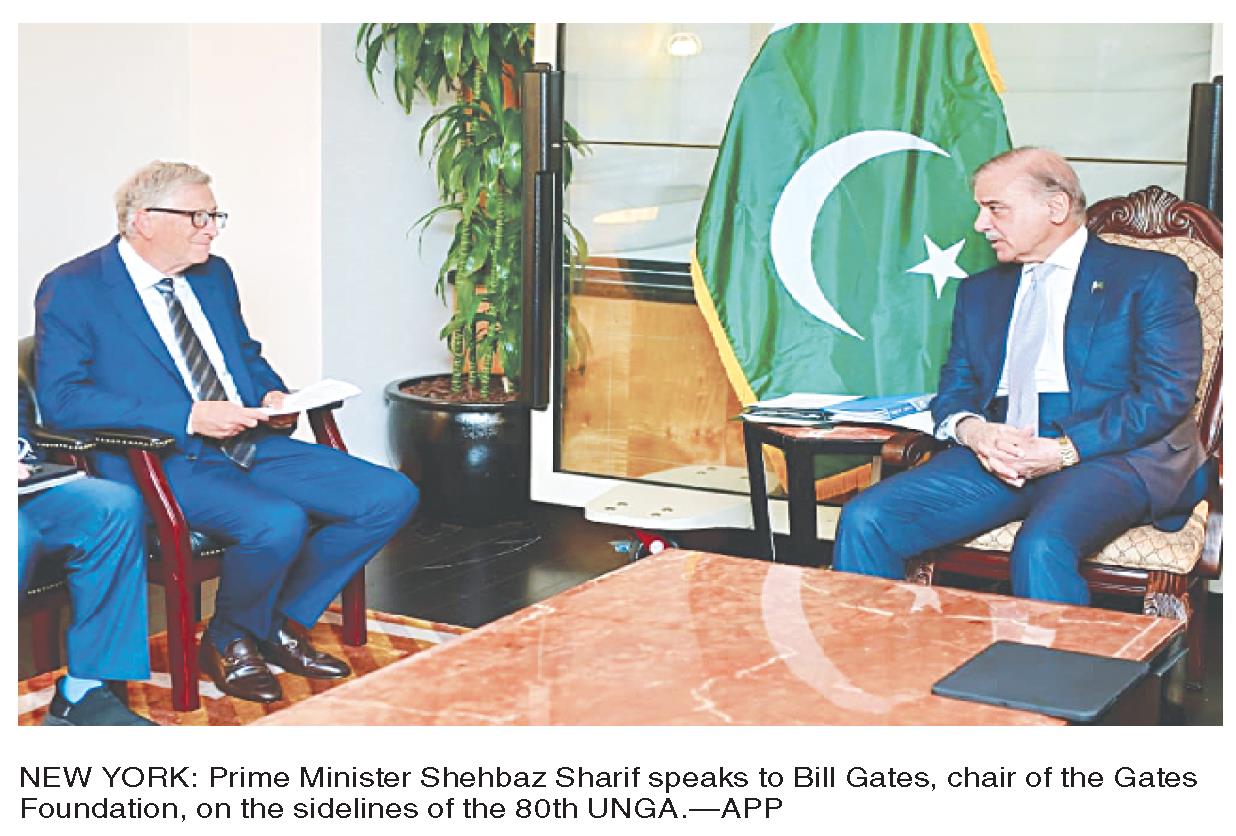Thumbs up for PM Shehbaz at his first Oval Office audience
2025-09-26
WASHINGTON: It was amid great pomp and circumstance that Prime Minister Shehbaz made his maiden visit to the White House on Thursday.
Although the meeting was delayed after an earlier presidential engagement overran the designated time, the Oval Office huddle with President Donald Trump also provided an insight into the two leaders` styles: the US president`s bombastic nature contrasting with PM Shehbaz`s agile countenance.
The meeting, the first formal bilateral interaction between the two leaders, comes six years after former PM Imran Khan met Trump during his first term in July 2019.
Images from Andrews air base, released by the PM Office on Thursday, showed the premier arriving in his official plane to a red carpet welcome by USAF officials, and setting off for 1600 Pennsylvania Avenue accompanied by a tight security protocol.
Field Marshal Asim Munir, who met the US president earlier this year for lunch at theWhite House, also accompanied the prime minister to the Oval Office.
From the US side, Vice President JD Vance and Secretary of State Marco Rubio were also present, a PM Office statement issued after the meeting said.
Photos released after the meeting showed both PM Shehbaz and Field Marshall Munir exchanging views with Trump.
Trump also flashed his signature thumbs up sign during a group photo.According to a handout from the PM Office, the meeting was held in a pleasant atmosphere.
The premier will now make his way back to New York, as he is due to address the UN General Assembly on Friday.
The meeting was closed to the press a break from President Trump`s usual modus operendi as he is quite fond of Oval Office photo-ops.
Although the media was not briefed until the time of going to press, information that filtered in through various official channels suggested thatthis was no mere photo-op.
Kept waiting The Washington visit had remained shrouded in mystery until late on Wednesday night, when the White House released the president`s schedule listing a meeting with the Pakistani prime minister at 4:30pm local time (1:30am on Friday in Pakistan).
However, his previous engagement the signing of a memo on domestic political violence and a subsequent media talk overran its scheduled time.
While speaking to reporters in the Oval Office about his disappointment with Vladimir Putin and Russia over the war in Ukraine, President Trump mentioned his own track record of stopping seven wars during his time in office.
He then pivoted to the upcoming meeting, saying: `In fact we have a great leader coming, the prime minister of Pakistan, and the field marshal. The field marshalisagreatguyandsois the prime minister.
President Trump was also conscious of the delay, telling the media: `They are coming and they may be in this room right now.
I don`t know because we are late.
Photos from the White House press pool showed PM Shehbaz and Field Marshal Munir waiting patiently on the Oval Office`s gold-gilded furniture as, across the room, the US president wrapped up his previous engagement.
The army chief could also be seen speaking to White House staffers as mediapersons packed up their equipment. When Secretary of State Marco Rubio entered the room, he could be seen enthusiastically greeting both leaders.
Topics of interest President Trump, who has been insistent on claiming credit for talking India and Pakistan back from the brink in May of this year, has been campaigning for a Nobel Peace Prize for his diplomacy.
While Pakistan has been too happy to credit the US president as the main peacemaker, India`s pugnacious denial of the same has caused the White House much chagrin.
For Islamabad, the Oval Office meeting also provided valuable imagery of parity a reminder that Pakistan retains relevance in Washington`s strategic thinking despite America`s long courtship of India. For Trump, the session offered another stage to cast himself as a peacemaker.
As one analyst noted: `Trump wants the world to see him as the man whomakes deals. Shehbaz wants the world to see Pakistan as dependable.
While scant information was available about the agenda of the meeting beforehand, observers expected it to include a wide range of topics, from mineral exploitation to regional security concerns.
Islamabad and Washington have re cently forged connections in the minerals and crypto sectors, ever since Trump took office in January.
Earlier this month, Pakistan signed a $500 million MoU with US Strategic Metals, which US Charge d`Affaires in Islamabad Natalie Baker hailed as `yet another example of the strength of the US-Pakistan bilateral relationship that will benefit both countries`.
In April, the Pakistan Crypto Council (PCC) partnered with WorldLiberty Financial (WLF), a decentralised finance platform backed by Trump, to advance cryptocurrency applications and boost blockchain adoption.
Sources in Washington also claimed that the army chief`s presence showed that the talks would also feature a focus on security issues, particularly Pakistan`s counterterror cooperation, growing role in the Middle East peace process, the Pakistan-Saudi defence pact and Islamabad`s possible inclusion in the UN-backed peace force for Gaza.
Ties with India were also expected to feature heavily in the discussion.
NY meetings Earlier, PM Shehbaz held separate meetings with Gates Foundation chief Bill Gates and Bangladeshi leader Muham-mad Yunus, on the sidelines of the 80th UNGA session in New York.
In his meeting with Mr Gates, the PM appreciated the Gates Foundation`s generous contribution to Pakistan`s 2025 nood response, and recalled its contributions during the 2022 floods as well, according to a PM Office readout.
He also lauded the support extendedtoPakistan for polio eradication, improving immunisation and nutrition, as well as promoting financial inclusion in the country.
In his meeting with the chief adviser of Bangladesh, the two leaders reviewed the current state of PakistanBangladesh bilateral relations and discussed ways to further strengthen cooperation in diverse areas, including trade, regional connectivity, and peopleto-people exchanges.




